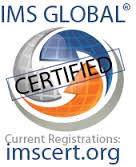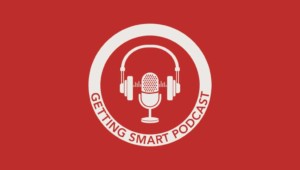Supporting Mix & Match Digital Learning

It’s a step in the right direction.
Pearson announced last week that Realize, its main K-12 content delivery system, is fully compliant with IMS Global’s Learning Tools Interoperability (LTI) standards.
Why is that a big deal? Let’s start with some background:
IMS Global Learning Consortium is a nonprofit membership organization that strives to enable the adoption and impact of innovative learning technology through open architecture standards that improve learner experience and reduce provider cost.
Learning Tools Interoperability is a spec developed by IMS to establish a standard way of integrating rich learning applications (Tools) with learning management systems or learning environments (Platforms or Tool Consumers).
Pearson Realize is a content management system that, because it’s LTI compliant, makes almost all of the company’s K-12 content and data easy to use, access and analyze, regardless of what other systems a school is using.
We called Marc Nelson, Pearson’s VP of Product Management, in Phoenix (where it was 115 degrees) to get the details.
“Fidelity of implementation is everything in digital,” said Nelson. He explained that how print content was deployed made a big difference, but now that everything is mix and match digital interoperability is critical.
“To fulfill the promise of digital, we’ve got to be able to work hand-in-hand with districts,” said Nelson. “We can now support customers differently based on how they use the content.
“When a district like Houston chooses a LMS like its learning they do so so that over a four- or five-year rollout, they can gain consistency. They don’t want publisher platforms getting in the way.”
Houston ISD was the first big district to adopt the IMS thin common cartridge so that content would be compatible with and accessible through itslearning (what they call PowerUp HUB) which houses teacher and student learning content, as well as third-party applications, such as ABC Clio, Gradespeed and Kurzweil.
Pearson supports IMS by contributing resources to the IMS Question and Test Interoperability specification (QTI) working group, supporting development of IMS Caliper standard for data exchange, and offering new curriculum up on any LTI certified platform. Pearson has two million tech enabled items all scorable by the QTI standard and exportable in several formats.
“We’re committed to LTI to it because it makes sense for teaching and learning, we have to be aware of the barriers to implementation teachers face.”
Realize also uses IMS OneRoster, a common approach to rostering students. OneRoster, supported by Pearson EasyBridge, allows this work to be completed quickly with drag-and-drop simplicity.
Publishers have noted the growing number of IMS districts to gain single sign on and interoperability.
While Pearson may be the furthest along of large publishers in data sharing, McGraw recently introduced Access Manager, a rostering tool designed to simplify the process of moving student rosters into McGraw-Hill Education digital tools.
Serious About Interoperability
Using the IMS thin Common Cartridge, LTI and OneRoster standards takes most of the cost and time out of integration while at the same time enabling school district control of rostering of the digital assets,” said IMS CEO Rob Abel.
Beaus schools get the ability to search for content at a granular “learning object” level from within the learning management system (LMS), Abel sees these standards bolstering the K-12 LMS market (see a review of platforms).
“For a decade states and districts have had to deal with the ‘claim of standards and interoperability’ but with the IMS focus on neutral third-party certification suppliers are actually doing things in a way that enables interoperability among a large number of products,” said Abel. IMS certifies products (416 currently) and IMS stands behind those certifications.
It’s clear that all the major publishers agree that custom integrations are a waste of everybody’s time and have lined up with IMS, “truly like night and day compared to three to five years ago,” said Abel.
IMS Global is approaching the size of W3C now in terms of number of members and revenues–a noteworthy development, according to Abel “because it means that the EdTech sector now ‘owns’ a standards initiative of the size of the world-wide web or healthcare.” It suggests that EdTech is getting serious about interoperability. And, as Rob Abel notes, “We are just getting going in EdTech.”
Road Ahead
On the road ahead, Nelson acknowledge that most schools will want to use content from many sources and combine multiple forms of data to make mastery judgements–and that is still challenging.
Nelson suggested that the step after that would be adding some intelligent recommendations for the next assignment based on a broad range of assessment data.
LTI integration is a step in the right direction for Pearson. Nelson said the destination is clear: “We want to be first in digital learning.”
For more, see
- IMS Global Accelerates Adoption of Integrated Digital Curriculum
- Technical Challenges on the Path to Personalization
- Shift To Digital: EdTech ‘Look Fors’
Stay in-the-know with all things EdTech and innovations in learning by signing up to receive the weekly Smart Update. This post includes mentions of a Getting Smart partner. For a full list of partners, affiliate organizations and all other disclosures please see our Partner page.





0 Comments
Leave a Comment
Your email address will not be published. All fields are required.